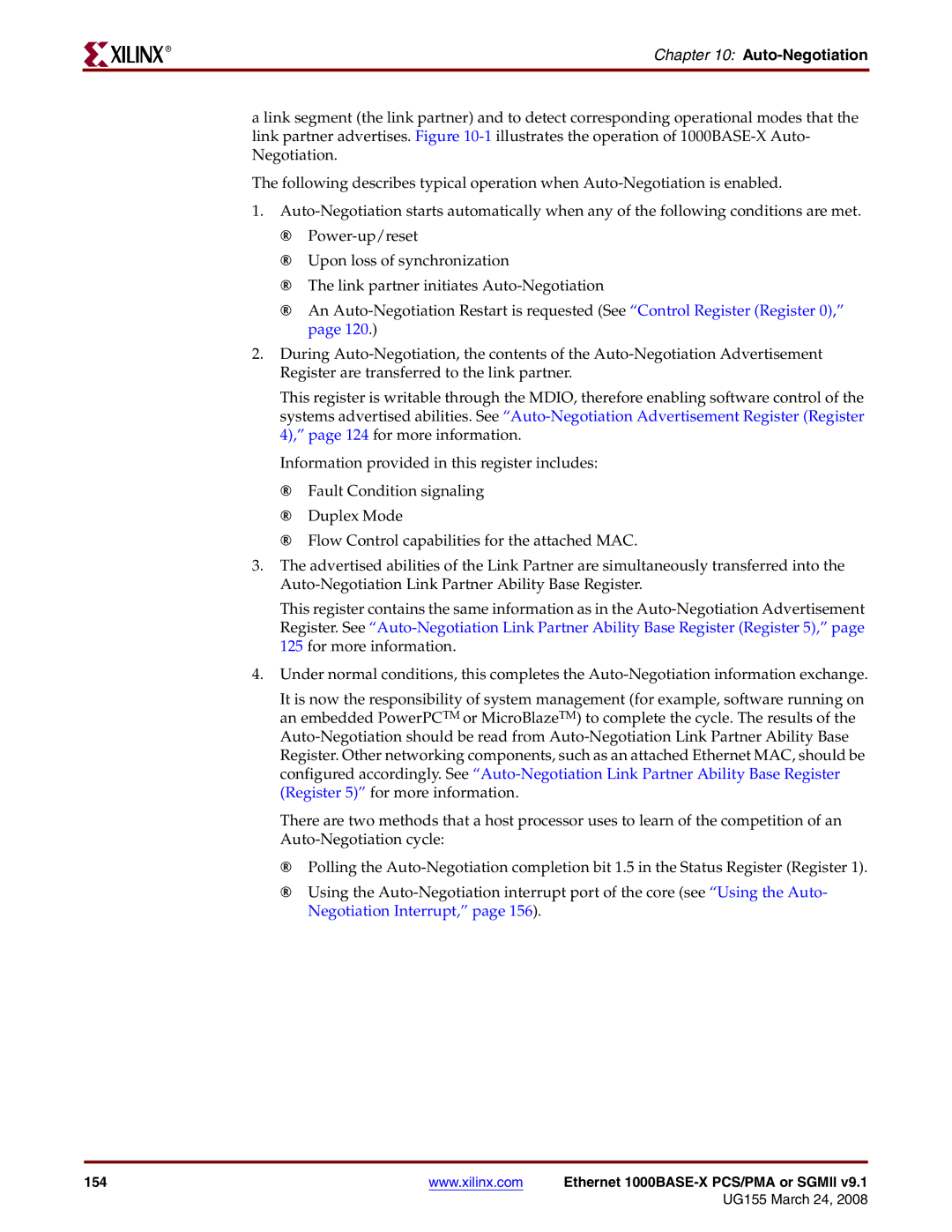
R
Chapter 10: Auto-Negotiation
a link segment (the link partner) and to detect corresponding operational modes that the link partner advertises. Figure
The following describes typical operation when
1.
♦
♦Upon loss of synchronization
♦The link partner initiates
♦An
2.During
This register is writable through the MDIO, therefore enabling software control of the systems advertised abilities. See
Information provided in this register includes:
♦Fault Condition signaling
♦Duplex Mode
♦Flow Control capabilities for the attached MAC.
3.The advertised abilities of the Link Partner are simultaneously transferred into the
This register contains the same information as in the
4.Under normal conditions, this completes the
It is now the responsibility of system management (for example, software running on an embedded PowerPCTM or MicroBlazeTM) to complete the cycle. The results of the
There are two methods that a host processor uses to learn of the competition of an
♦Polling the
♦Using the
154 | www.xilinx.com | Ethernet |
|
| UG155 March 24, 2008 |
